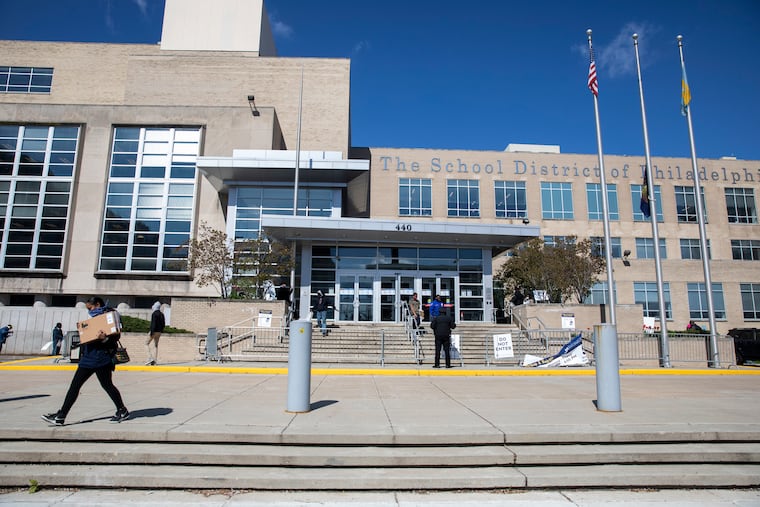‘Stubborn inequity’: 6 in 10 Philly kids still attend low-performing schools, report says
The patterns are not new, but the persistent inequities are notable as the Philadelphia School District prepares to face significant upheaval.

Though most Philadelphia schools have made academic strides in recent years, six in 10 city children still attend a low-performing school, and the picture is much starker for Black and Latino children and kids living in economically disadvantaged neighborhoods.
The patterns are not new, but the persistent inequities are notable as the Philadelphia School District prepares to face significant budget challenges and a planning process that could result in school closings and other upheavals.
The data come from a report, released Wednesday by the Philadelphia School Partnership, which analyzed three years of enrollment, student achievement, and growth at schools serving about 140,000 children in kindergarten through eighth grade in traditional public schools and city charters. The children account for 70% of the 200,000 students enrolled in traditional public and charter schools combined. (The report did not include high schools in its research, or compare district to charter school performance.)
The analysis comes while school buildings are still closed amid the COVID-19 pandemic, with leaders stating unequivocally that systemwide changes will be necessary going forward, for reasons financial and educational.
“Despite the steady progress Philadelphia public district and charter schools have made in improving school quality over the last few years, stubborn inequity remains in how students are enrolled in schools,” David Saenz, spokesperson for the Philadelphia School Partnership, a nonprofit that aims to expand the number of students in high-quality schools, said in a statement.
PSP has raised and donated $80 million to charter, private, and district schools since 2011, but is viewed in some educational circles with skepticism as being opposed to traditional public schooling, in part because it supports expanding certain charter school options.
The nonprofit’s analysis found that nearly 60% of city elementary school children attend a low-performing district or charter school, defined by PSP as those below the average achievement for Philadelphia schools. Black and Latino students are overrepresented in those schools, while white and Asian children are overrepresented in those deemed high-performing — meeting or outstripping Pennsylvania state averages.
By the report’s metric, no elementary school serving a school population that’s more than 85% economically disadvantaged is high achieving. Less than 10% of Black and Hispanic students are enrolled in high-achieving schools; 45% of white students attend schools in the high-achieving tier.
The city’s best schools are mostly located in the Northeast, in Center City and in South Philadelphia; its lowest performers are in North Philadelphia, Southwest Philadelphia, and Northwest Philadelphia.
The neighborhood-to-neighborhood comparisons are stark.
In Southwest Philadelphia, for instance, where most residents are poor and Black, there are no high-achieving schools, one average-achieving school and 12 low-achieving schools. In Fox Chase, with its higher concentration of white and middle-class residents, there are seven high-achieving schools, 12 average-achieving schools, and one low-achieving school.
Schools of high or average achievement tend to be overcrowded or have no open seats available (some even hold lotteries for kindergarten seats), the report found. By contrast, many struggling schools have abundant open seats. By the report’s count, there are 29,000 open seats in schools it rates as low achieving.
» READ MORE: Why Philly parents lined up at 4 a.m. to get their kids into kindergarten
While an alarming number of schools struggle, many have demonstrated growth over the last three years. Most schools, low and high achievers, outperform Pennsylvania averages for student progress. In North Philadelphia, two-thirds of all students attend “high growth” schools.
Still, the report concluded, “in most instances the growth is not translating into meaningful achievement gains.”
The goal of the analysis, PSP said, is to provide parents and decision makers with information “as they consider schools for their children, school admissions and enrollment policies, and expansions, renovations or closures of school buildings.”
Inquirer staff writer Maddie Hanna contributed to this article.
The Philadelphia Inquirer is one of more than 20 news organizations producing Broke in Philly, a collaborative reporting project on solutions to poverty and the city’s push toward economic justice. See all of our reporting at brokeinphilly.org.